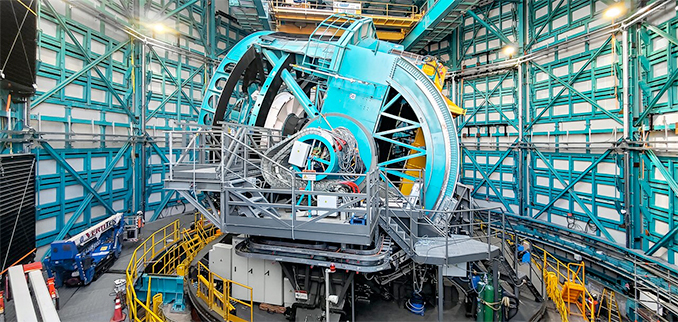
News release from NOIRLab
The U.S. National Science Foundation-funded Vera C. Rubin Observatory has reached a major construction milestone with the completion of the telescope structure, known as the Telescope Mount Assembly. This designation means that the telescope, named the Simonyi Survey Telescope, is on track to receive the observatory’s massive 8.4-meter mirror, 3200-megapixel LSST Camera (the largest digital camera ever constructed for astronomy, funded by the Department of Energy and built at SLAC National Accelerator Laboratory), and other precision optical components.
Rubin will be a pioneering observatory designed to explore the mysteries of dark matter, study the enigmatic nature of dark energy, and probe many other grand challenges of cosmology, astronomy, and astrophysics. It also will be the first observatory designed to study the changing Universe, essentially making “movies” of the night sky.
These remarkable capabilities come, in part, from the telescope’s revolutionary design. Though Rubin is structurally similar to other 8-meter-class telescopes, it is considerably shorter, giving it a much lower center of gravity, which allows it to quickly and precisely move from one area of the sky to another. Such ease of movement is essential to capture fleeting, transient events, such as gamma-ray bursts and bright flashes of supernovae.
One of Rubin’s primary science goals is to conduct a decade-long survey of the optical sky called the Legacy Survey of Space and Time. This unprecedented campaign, starting in 2025, will collect and process more than 20 terabytes of data each night — and up to 10 petabytes each year for 10 years — to compile detailed composite images of the southern sky.
The speed and nimble design of the telescope will allow it to survey the entire visible southern sky every few nights and will essentially create a time-lapse movie of changes over different timescales to learn about the risks from asteroids and many other phenomena in the changing Universe. Over the course of a decade, the LSST Camera will detect and capture images of an estimated 30 billion stars, galaxies, star clusters, and asteroids.
